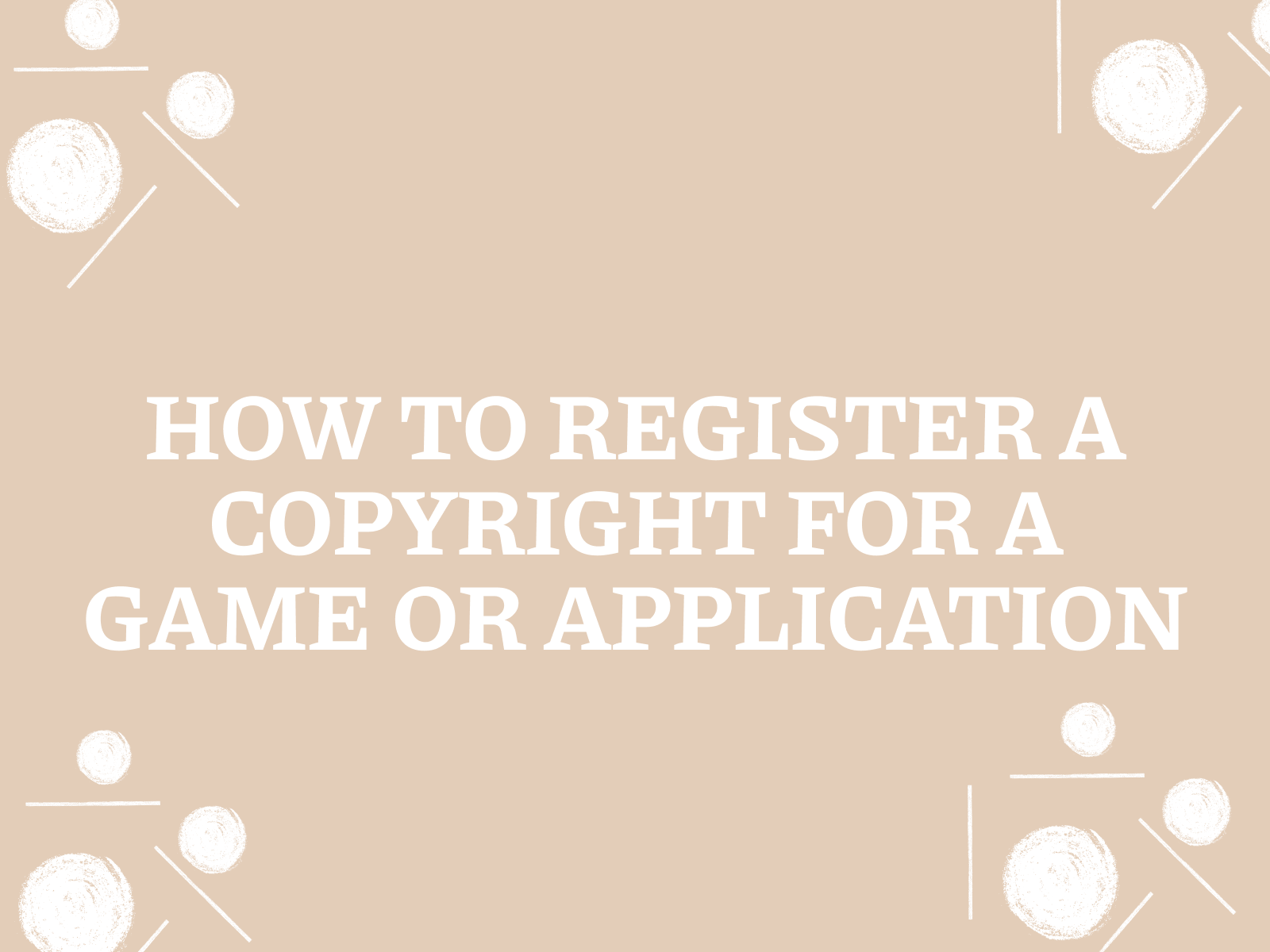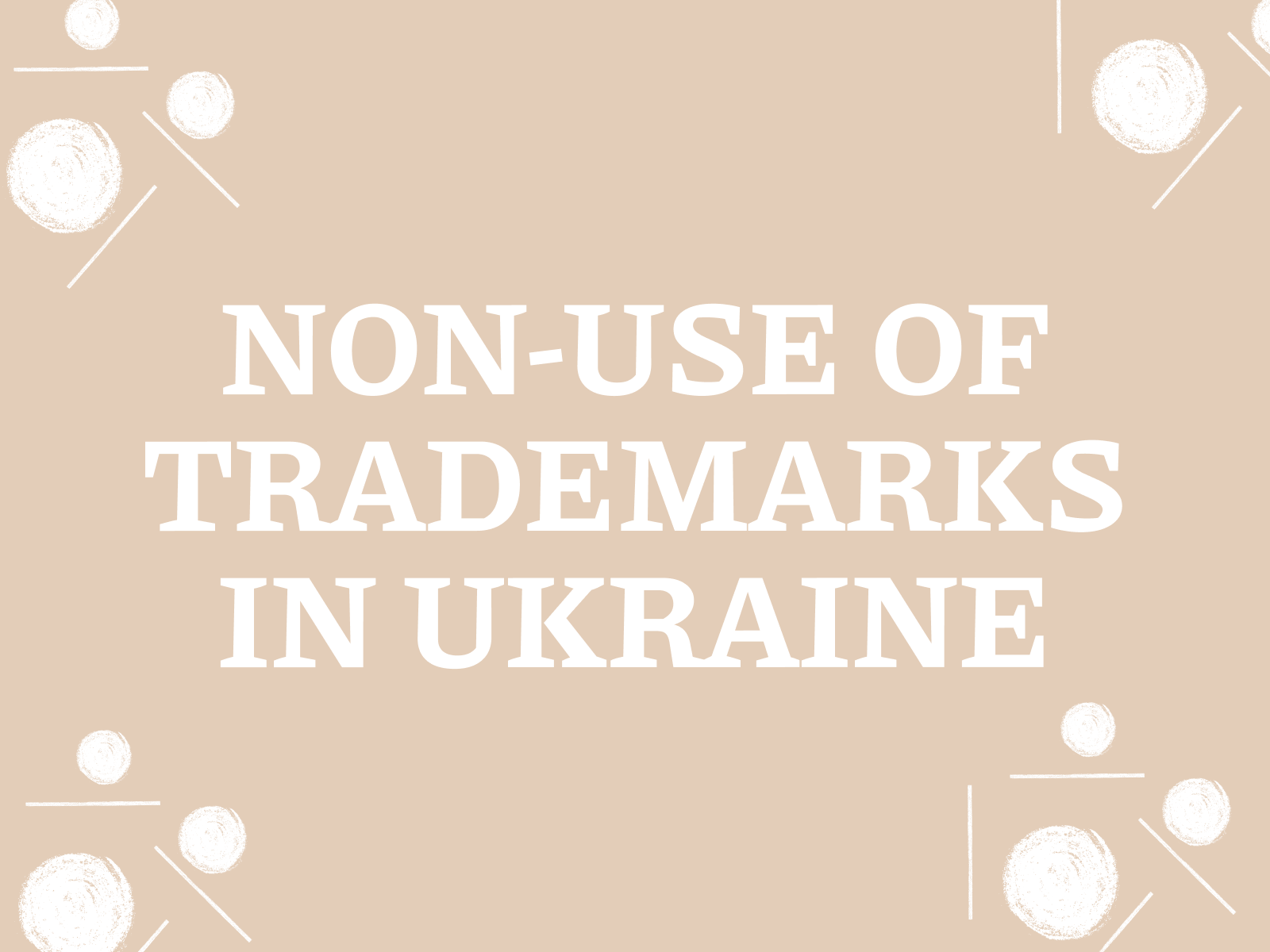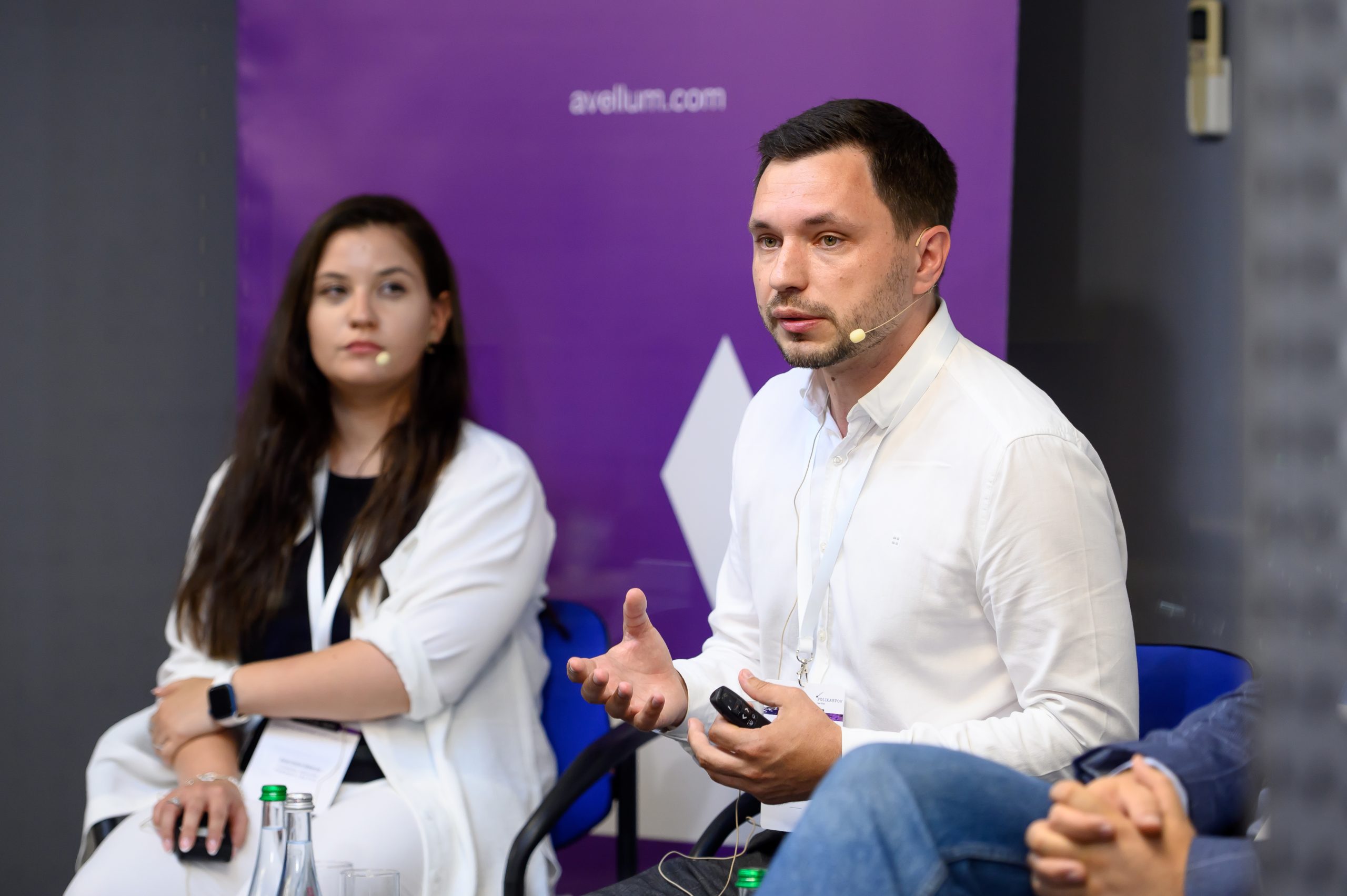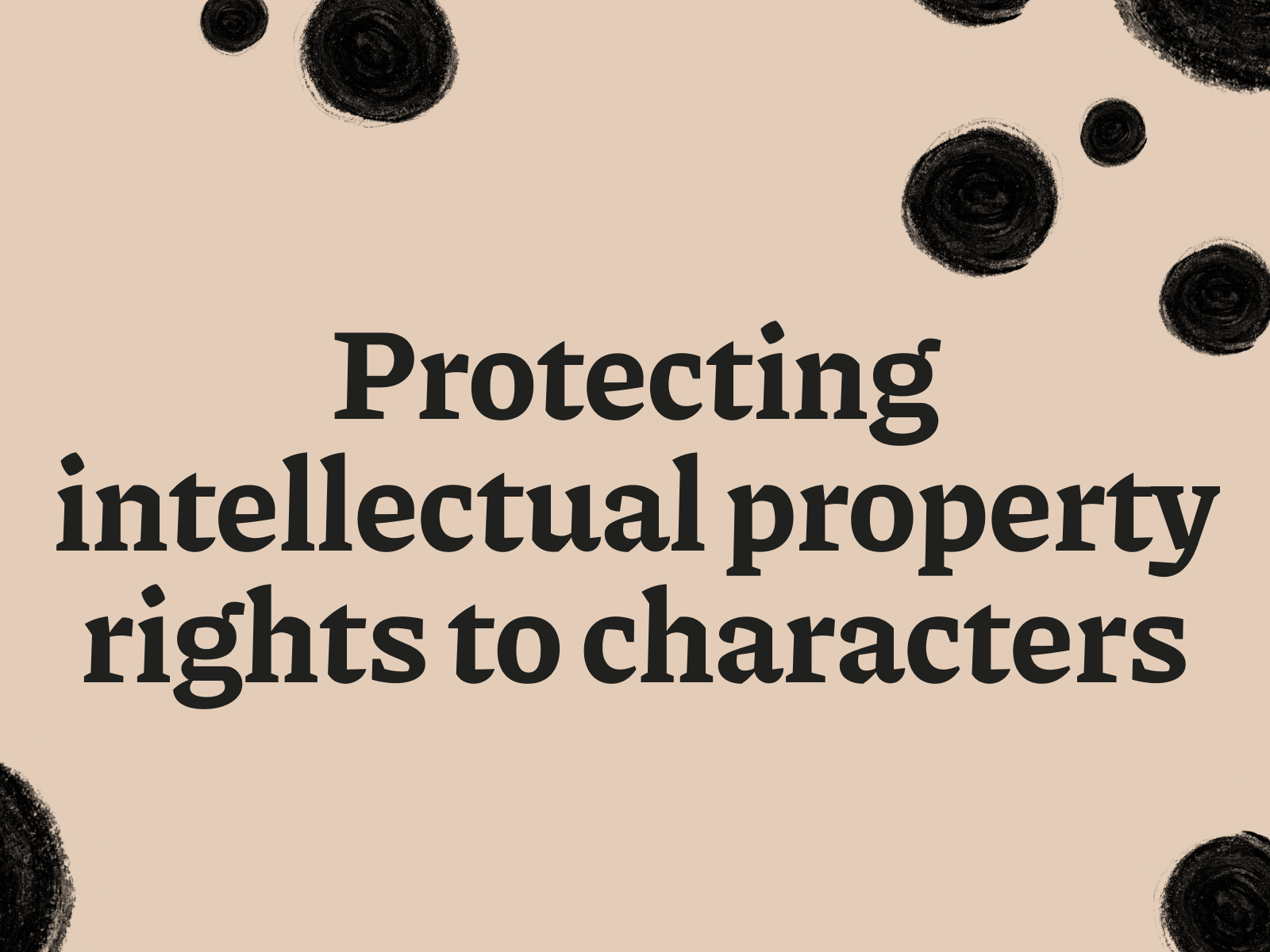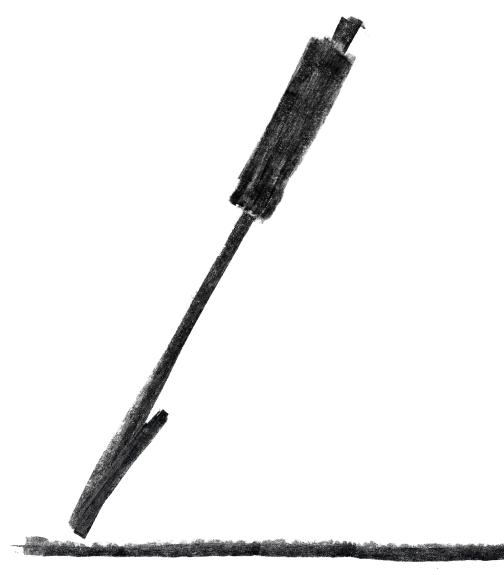In the world of digital technologies, where games and applications have become an integral part of our lives, the issue of intellectual property protection is of particular importance. As the creator of an exciting game or innovative application, you invest not only time and knowledge, but also a piece of your own soul in your project. But is it enough just to create something unique to automatically get full rights to it? Is it worth thinking about copyright and its protection if your product is still at the development stage?
In this article, we will consider important aspects of copyright registration for games and applications in Ukraine, help you understand all the intricacies of this process and answer questions that concern many developers.
Section 1: Do I need to register a copyright for my game or app?
You have created a unique game or application, investing your time, creativity and resources in it. A natural question arises: do you need to officially register the copyright for your digital product, or is the fact of its creation enough? After all, on the one hand, copyright arises automatically, but on the other hand, copyright registration provides the developer with a number of significant advantages and an additional level of protection.
1.1. Copyright in games and applications: Are games and apps considered copyrightable in Ukraine?
Imagine a world without colourful computer game characters, exciting plot twists and innovative mobile applications that make our lives more comfortable. It is difficult, isn’t it? That is why the laws of most countries, including Ukraine, protect the rights of creators to their digital products.
But can all elements of a game or application be considered copyrightable? The answer is not always clear.
Ukrainian legislation defines the objects of copyright as “works of literature, art and science”, which, according to experts, may include games and applications. However, it is important to understand that copyright does not apply to ideas, concepts, principles, methods, processes, systems, ways, solutions to technical, organisational or other problems, discoveries, facts, programming languages.
What exactly is protected by copyright in games and applications:
- Program source code: is the text of a program written in a programming language that is the result of the programmer’s intellectual work. It is considered a literary work and is one of the key objects of copyright.
- Object code: Although object code is the result of compiling source code, if it is original and creative, it can also be protected by copyright.
- Audiovisual elements: is one of the most important aspects of games and applications that creates a unique user experience. Graphic images of characters and the game world, animation, music, sound effects – all of these are subject to copyright.
- Textual content: game plot, character dialogues, descriptions of the application’s functions are all works of literary genre protected by copyright. Even a short description of the application’s functionality can be subject to copyright if it is original and created by the developer’s own work.
- Design: The original design of the user interface (UI) and user experience (UX) can also be protected by copyright. This applies to both the visual design of interface elements and the logic of its construction.
It is important to remember that in order for a game or application to be protected as copyrighted works, it must be the result of the developer’s own creative work and not a copy of existing products.
1.2. Advantages of registration: Why do you need to officially register copyright in your development if it arises automatically from the moment of creation?
You’ve probably heard that copyright in a work arises automatically from the moment it is created. This means that you don’t need to go through any bureaucratic procedures to become the legal owner of your game or app. However, a logical question arises: if copyright arises automatically, then why register it?
Although the lack of official copyright registration does not deprive you of the rights to your work, it can make it much more difficult to protect them in the event of a dispute.
Let’s take a look at the main advantages of registering a copyright for a game or application:
- Official confirmation of authorship: A copyright registration certificate is an official document that confirms your authorship of a development. This is especially important if you plan to commercialise your product, enter into agreements with publishers, investors or licensees.
- Simplifying the protection of rights in court: In case of infringement of your copyright, a registration certificate will greatly simplify the process of protecting your interests in court. You will not need to additionally prove the fact of creation of the work and your authorship, which will save you time and money.
- Damages: If your copyright has been infringed, you are entitled to damages. The amount of compensation may be significantly higher if you have registered your copyright.
- The right to use the copyright mark: After registration, you can use the copyright mark (©) on your product. This serves as a warning to potential infringers that your design is protected by copyright.
- Transferability: If you plan to sell or license your development, having a registered copyright will make your offer more attractive to potential buyers or licensees.
Copyright registration at is an investment in protecting your intellectual capital. It will help you avoid unpleasant situations in the future and provide you with peace of mind and confidence that your unique product is under reliable protection.
Section 2: The process of registering a game or app copyright
So you’re ready to protect your game or app with a strong copyright shield? Great! Copyright registration is an important step on the way to securing your development rights and reaping all the benefits of owning intellectual property. In this section, we will take a closer look at the process of registering a copyright for a game or application in Ukraine, which, despite its importance, is quite transparent and straightforward.
2.1. Required documents: What documents are required to register a copyright for your development?
Copyright registration is, in fact, the official recognition of your authorship of a game or application. And like any other official procedure, it requires a certain package of documents. But don’t worry, the list of required documents is not too burdensome.
So, what exactly do you need to prepare to register a copyright for your game or application in Ukraine?
- Application for copyright registration. This is the main document in which you officially declare your desire to register the copyright for the development. The application can be filled out electronically on the website of the Ministry of Economic Development and Trade of Ukraine or in paper form.
- A document identifying the applicant. This can be a passport (for individuals) or statutory documents (for legal entities). If the registration is carried out by the applicant’s representative, a document confirming his or her authority (for example, a power of attorney) must also be provided.
- A copy of the work. This is one of the most important documents. Since we are talking about a game or application, a copy of a work can be the source code of the application (or a part of it containing original solutions), game or application distribution (installation file), a video of the game or application (with a demonstration of all key elements and functions), screenshots of the user interface and game locations (with additional explanations of the original design elements).
- Document on payment of the state fee. The amount of the state fee for copyright registration is regulated by the legislation of Ukraine and may change. Information on the current amount of the state fee can be found on the website of the Ministry of Economic Development and Trade of Ukraine.
All documents submitted for copyright registration must be duly executed (signed, stitched, sealed, if necessary). Documents executed in a foreign language must have a notarised translation into Ukrainian.
2.2. Step-by-step instructions: Detailed description of the process of copyright registration for a game or application in Ukraine
So, you have gathered all the necessary documents and are ready for the decisive step – copyright registration for your development. The Ukrainian Intellectual Property Institute (UIPI), a government agency that deals with the registration and protection of intellectual property, including copyright in software, which includes both games and applications, will help you with this.
Let’s take a look at the registration process step by step:
Step 1: Submission of the application and documents
- An application for copyright registration and a set of required documents can be filed in person or sent by post to Ukrpatent.
- It is also possible to submit the application and documents electronically through the online service on the Ukrpatent website (http://www.ukrpatent.org/).
- It is important to note that when filing documents electronically, all files must be signed with an electronic digital signature.
Step 2: Formal verification of documents by the experts of the Ukrainian National Research Institute
Upon receipt of your application and documents, the examiners of the Ukrainian National Institute of Intellectual Property conduct a formal examination. They check
- the correctness of the application,
- availability of all necessary documents,
- compliance of the documents with the established requirements.
If no mistakes or inaccuracies are found during the check, your application is accepted for consideration. If any deficiencies are found, you will be given time to correct them.
Step 3: Qualification examination of the application
At this stage, URCIP experts analyse the materials submitted by you (a copy of the game or application) for their compliance with the criteria of the copyright object and the presence of signs of creativity. This process may take some time, usually several months.
Step 4: Decision on registration or refusal of registration
Based on the results of the examination of the application, UIPI makes a decision:
- on copyright registration – in this case, you are issued a copyright registration certificate, which is an official confirmation of your rights to the development.
- refusal to register copyright – such a decision may be made if the experts conclude that your development is not a copyrighted work or does not meet the criteria of originality.
Registering a copyright for a game or application with the Ukrainian National Agency of Intellectual Property is an important step to protect your intellectual property rights. And although the registration process may seem a bit confusing, a clear understanding of all the stages and requirements will help you successfully overcome it.
Chapter 3: Copyright protection after registration
Copyright protection for developing a game or app does not end at the registration stage. Unfortunately, the digital sphere is also a space for potential infringements of your intellectual property rights.
In the third section, we will look at the practical aspects of protecting your rights after copyright registration. You will learn what to do if your game or application is illegally copied or distributed, as well as what protection features exist on the Internet.
This information will help you to effectively counteract infringements and defend your rights to the digital product you have created.
3.1. What to do in case of infringement: What should you do if your game or app has been infringed?
Discovering the fact of illegal use of your game or application is an unpleasant situation for any developer. However, there is no need to panic. There are a number of legal tools and strategies that can help you protect your rights and receive compensation.
Steps to take:
- Gathering evidence: First of all, you need to gather indisputable evidence of the breach. This may include:
-
- Screenshots, videos, links to pages where your development is posted without permission.
- Information about the identity of the infringer (name, company name, contacts).
- Information about the volume of illegal use (number of copies, downloads, views).
- Documents confirming your copyright (registration certificate, contracts with developers, source code with date of creation, etc.)
- Pre-trial settlement: it is recommended to start with an attempt to settle the dispute out of court.
-
- Draw up a formal letter of claim to the infringer demanding to stop the illegal actions and suggesting ways to resolve the conflict (removal of copies, conclusion of a licence agreement, payment of compensation).
- Send the letter by registered mail with a description of the contents and acknowledgement of receipt, or use a notary to serve the claim.
- Going to court: If the out-of-court settlement fails, you have the right to go to court.
-
- Prepare a statement of claim with a detailed description of the violations, substantiation of your claims and calculation of damages.
- Attach the evidence you have collected to the claim.
- Apply to the court at the defendant’s location or at the place where the offence was committed.
Important:
- Deadlines: pay attention to the statute of limitations. In Ukraine, they are 3 years from the date when the infringement became known.
- Legal assistance: engaging an experienced lawyer specialising in intellectual property matters will significantly increase your chances of success.
Remember: copyright protection is your duty and right. Don’t be afraid to defend your interests and seek help from specialists.
3.2. Protection on the Internet: Peculiarities of copyright protection of a game or application on the Internet.
The Internet, while being a fertile environment for the distribution of games and applications, also creates specific challenges for copyright protection. The speed of information dissemination, the anonymity of users and the cross-border nature of the network make it difficult to monitor compliance with intellectual property rights.
What are the specifics of protection on the Internet?
Technical measures:
- DRM (Digital Rights Management): implementing digital rights management systems that restrict copying, unauthorised access and distribution of your product.
- Watermarking and Steganography: Adding invisible marks to code, graphics, or audio to identify the author and source of distribution.
- Serial numbers and activation: the use of unique keys for each copy of a game or application, which makes it impossible to use unlicensed versions
Legal instruments:
- DMCA (Digital Millennium Copyright Act): In the United States, there is a law that allows copyright holders to demand that Internet service providers, hosting companies and online platforms remove infringing content.
- Similar laws in other countries: Ukraine and many countries around the world have laws similar to the DMCA that regulate the liability of internet intermediaries.
Monitoring and response:
- Search engines: use special search engine tools to find illegal copies of your product on the Internet
- Monitoring services: there are specialised services that automatically monitor the Internet for illegal content.
- Collaboration with online platforms: notify the administration of app stores, social networks, and other platforms of any violations.
Important:
- Evidence in the digital world: take screenshots, save web pages, record the date and time of infringement – this data can serve as evidence in the event of a lawsuit.
- Constant vigilance: protecting copyright online is an ongoing process that requires attention and proactive action on your part.
Despite the challenges posed by the digital environment, there are sufficient tools to protect your copyright. The key is a comprehensive approach that combines technical, legal and organisational measures.
Conclusion
In a world where digital technologies are developing at a breakneck speed and games and mobile applications are becoming an integral part of our lives, the issue of intellectual property protection is becoming particularly relevant. We hope that this article has helped you to understand the intricacies of copyright for games and apps in Ukraine, as well as provided you with practical tools to protect your digital product.
Remember:
- Copyright to a game or application arises automatically from the moment it is created, but registering copyright provides you with significant benefits and makes it easier to protect your rights.
- The process of copyright registration in Ukraine is quite simple and straightforward, especially if you seek the assistance of a qualified lawyer.
- Copyright protection is an ongoing process that requires you to be vigilant and proactive, especially on the Internet.
Do not allow anyone to appropriate the fruits of your creative labour. Stand up for your rights and remember: your unique product deserves reliable protection!
Can I register a copyright for a game idea even if it hasn't been developed yet?
Unfortunately, it is impossible to register a copyright for a game idea alone, even a brilliant and innovative one. The law protects not the idea itself, but its specific implementation.
Imagine that you have come up with a fascinating story for a game, but have not yet brought it to life – you have not created characters, thought through the mechanics, or written the code. In this case, your idea is not yet an object of copyright.
What should you do to protect your idea?
- Record it: Clearly state your game idea in writing, describing the plot, mechanics, and characters. Add sketches, diagrams, any materials that illustrate your idea. Date and sign the document.
- Maintain confidentiality: Do not disclose the details of your idea publicly until you are ready to implement it. If you need to discuss the idea with potential partners or investors, sign a non-disclosure agreement (NDA) with them.
- Start implementing: The best defence of your idea is to bring it to life. As soon as you start creating specific elements of the game – code, design, music – they will automatically become copyrighted.
- Register the copyright: After creating the game or its demo version, consider registering the copyright with the Ukrainian National Intellectual Property Office. This will provide you with additional legal guarantees and make it easier to protect your rights in case of a dispute.
Remember: an idea is only the first step on the way to creating a successful game. Don’t stop there, bring your ideas to life!
What are the risks for a game or app developer of using someone else's open source code without proper licensing?
It may seem tempting to use someone else’s open source code without proper licensing, especially for novice developers. However, such a step can lead to serious legal problems and financial losses.
What are the risks associated with negligent use of open source licences?
- Copyright infringement: Even open source code is protected by copyright. Using it without complying with the terms of the licence is considered an infringement of the author’s rights, regardless of whether it is done intentionally or out of ignorance.
- Legal action and compensation: Copyright holders of open source code have the right to sue for illegal use. The consequences can include not only the forced removal of your product from the market, but also the payment of significant compensation.
- Reputational risks: Cases of copyright infringement can significantly damage a developer’s reputation. Users tend to be distrustful of products created in violation of the law, which can negatively affect the popularity of your game or app.
- Problems with investors and partners: Investors and partners tend to avoid working with developers who neglect intellectual property issues. Using open source code without proper licensing can jeopardise future investments and partnership agreements.
How to avoid risks?
- Read the licences carefully: Before using open source code, read the licence terms carefully. Pay attention to the restrictions on commercial use, the need to maintain authorship, and the possibility of modifying the code.
- Follow the requirements of the licences: Strictly adhere to all licence terms, e.g., mention the code authors in your product, provide a link to the licence, publish the source code of your development if the licence requires it.
- For legal advice, please contact: If you are unsure about the correct interpretation of a licence, seek advice from a lawyer specialising in intellectual property issues.
Remember: using open source code is a great opportunity to speed up development and improve the quality of your product, but only if you comply with all licence requirements.
How to prove your authorship of a game or application if a dispute arises and there is no official copyright registration?
Proving your authorship of a game or application in the absence of an official copyright registration can be a difficult task, but not impossible. The court will take into account various types of evidence confirming that you created the digital product and when it appeared.
What kind of evidence can be used?
- Initial development materials: Keep all the initial materials related to the game or app development process – early versions of code, design mockups, scripts, notes, correspondence with colleagues. It is important that these materials contain the date of creation (or clearly identify it) and your signature.
- Deposit: Consider depositing your code or beta game on specialised platforms. Such services record the date of uploading materials, which can serve as proof of their creation up to a certain point.
- Witness statements: If the game or app was developed in a team, or you discussed your idea with other people, their testimony about your authorship and the time of creation of the product may be taken into account by the court.
- Publications and presentations: If you have published articles about the development of your game, presented it at conferences or exhibitions, these materials can also be used as evidence of your authorship.
- Technical expertise: In some cases, the court may order a technical expert to analyse the code of a game or application, establish the date of its creation and identify the author.
Important to remember:
- Clarity and convincing: The more clearly and convincingly you can prove that you created the game or app and when it was created, the better your chances of success in court.
- Professional assistance: In case of serious disputes, it is recommended to seek the assistance of a lawyer specialising in the protection of intellectual property.
Although the lack of official copyright registration makes the process of protection more difficult, it does not make it impossible. Keep all materials related to the development, record the date of their creation, and be ready to defend your rights!
Does it make sense to register a copyright for a game or application if I plan to distribute it for free?
Have you decided to distribute your game or app for free? That’s a great initiative! But does this mean that copyright registration is meaningless? Not at all!
Although you do not receive direct profit from free distribution, your development remains your intellectual product, and you have every right to protect it.
Why is copyright registration still important even for free products?
- Prevention of unfair use: Even a free game or app can be passed off as their own, used for commercial purposes without your permission, or distributed in modified versions that are against your wishes. Registering a copyright is your way of preventing such cases and maintaining control over the fate of your creation.
- Plagiarism protection: Unfortunately, in the world of game and app development, plagiarism does happen. If someone copies your free development and starts distributing it commercially, having a registered copyright will be a strong argument in your favour in court.
- Increase your credibility: Registering a copyright, even for a free product, demonstrates that you are serious about your business and care about intellectual property. This can increase your credibility as a developer with users, partners, and investors.
- Possibility of future monetisation: Have you decided to distribute for free now, but don’t rule out the possibility of commercialising your game or app in the future? Registering a copyright today will provide you with a legal basis for monetising your product if necessary.
Remember: creating a game or application, even a free one, is a lot of work that is worth protecting. Do not neglect your intellectual property rights – register the copyright for your product!
What international agreements protect copyright for games and applications developed in Ukraine?
Your game or application developed in Ukraine automatically receives copyright protection not only in our country, but also in many other countries around the world. This is made possible by international agreements to which Ukraine is a party.
Which international agreements protect your rights?
- Berne Convention for the Protection of Literary and Artistic Works (1886): This key agreement sets out the minimum level of copyright protection that must be provided in all member states.
- Universal Copyright Convention (1952): Supplements the Berne Convention by expanding the list of protected works and establishing specific provisions for copyright in computer programs.
- TRIPS Agreement (Agreement on Trade-Related Aspects of Intellectual Property Rights, 1994): This agreement, which is part of the World Trade Organisation (WTO), sets high standards for the protection of intellectual property, including copyright, and provides for effective mechanisms for enforcing rights in the event of infringement.
What does this mean for you as a developer?
- Territorial protection: Your copyright in a game or application will be automatically recognised in all countries that are parties to these treaties, even if you have not officially registered it in each country.
- Level of protection: You can expect the minimum level of protection set out in the Berne Convention and, in some cases, even broader rights under other agreements.
- The right to defend: In case of infringement of your copyright, you can apply to a court or other competent authority in any country that is a party to these agreements, even if the infringer is located in another country.
Important:
- International treaties establish a general framework for protection, but the laws of each individual country may have their own specifics.
- In the event of a copyright dispute, it is recommended that you seek advice from a lawyer specialising in international intellectual property law.
Protecting your copyrights is not only your right, but also a way to promote the development of the creative industry in Ukraine. Be responsible creators and defend your rights!
- The Law of Ukraine “On Copyright and Related Rights”. Reference.
- Berne Convention for the Protection of Literary and Artistic Works. References.

